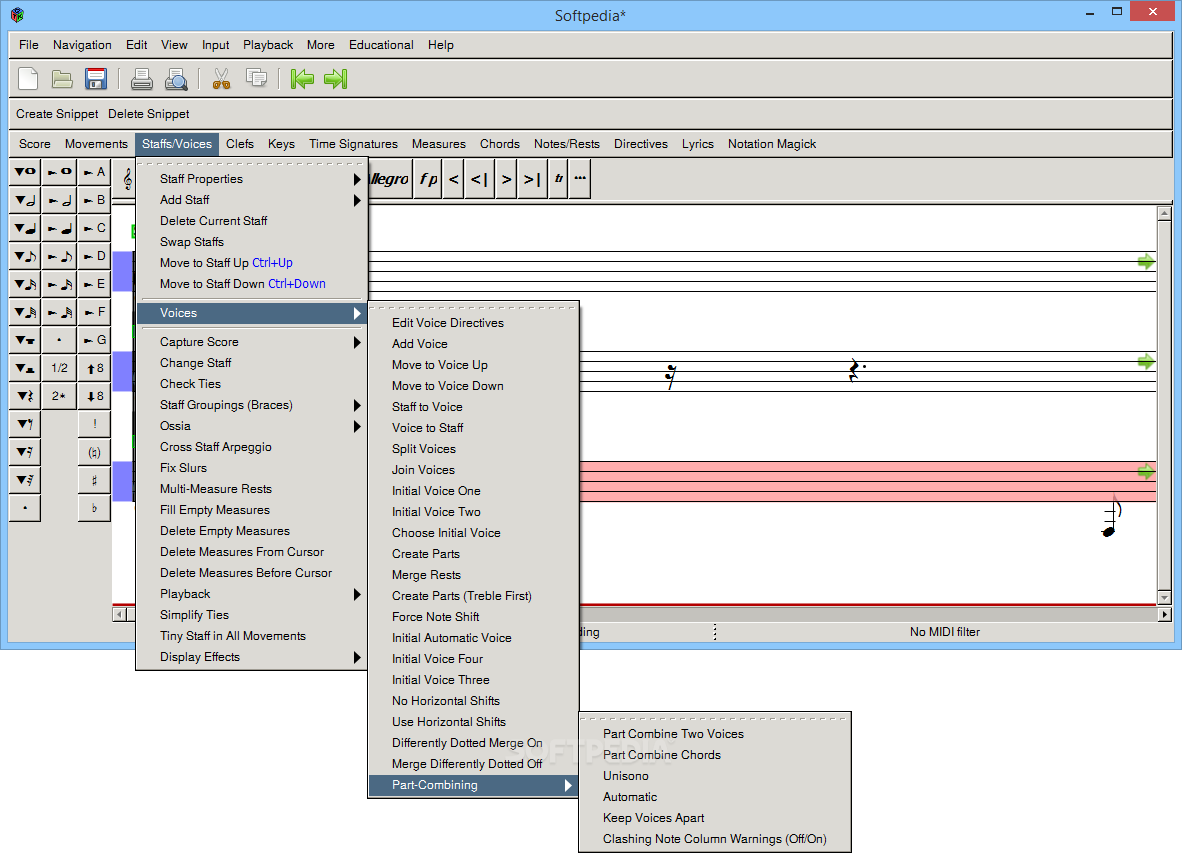

exec-prefix=DIR change libxml exec prefix With the simple example quoted previously, we would only need 54 notes to be played, so the pass is very efficient.Īs I said earlier, the method used for note entry is down to personal preference.-prefix=DIR change libxml prefix There is no need, as this has already been done in pass one. This would behave exactly as the current Musescore pitch rewrite method.

For a more complicated piece, having entered the all the rhythm, I would check the transcription against the original score, have a cup of coffee, and then use my MIDI keyboard to enter the note pitches only. There would be 64 numeric key-presses, ten of which would have the Alt key pressed simultaneously.Ģ. As a simple example assume 16 measures of 4/4 time comprising only crotchets. This would be fully-readable and could be easily checked or, if very complicated, saved and printed for off-line examination. The result of 'pass one' would be a transcription of the score as a single line of notes and rests. Ideally, the keypad would be played at the tempo of the original score, wearing my musician's hat. As there are likely to be far more notes than rests, I would only hold down the Alt key while playing the rests. The Alt key would act as a dynamic selector to choose notes or rests. Enter the rhythm by playing the numeric keypad as a musical instrument. If transcribing a draft score, my approach would be as follows:ġ. At the end of the day, the method used for note entry is one of personal preference. Thank you for spending so much time considering my topic. The additional Note/Rest key-presses would be identical in either case. I must admit I prefer this scenario! It seems clumsy to use a MIDI key for controlling rests when dealing with pitch entry. On the second pass, the musician would use the MIDI keyboard to enter the pitches but would not have to worry about identifying which of the displayed notes were actually rests and needed to be changed. All the rhythmical information, however, will have been captured during that scan. This simple method would produce a musical line of readable music, albeit of a single pitch. With the Alt key DOWN rests would be entered. By playing the keypad using the right hand with, for example, the Alt key UP, notes would be entered. The focus of the first pass is to enter the rhythm correctly. My standpoint is that of a musician 'playing' the numeric keypad. Some of the notes would, indeed, be rests and would need to be identified and changed on the second pass from the MIDI keyboard.

I am now confused! If I understand you correctly the first pass (using the numeric keyboard) would result in a line of, say, middle-C notes of varying durations without any rest symbols displayed. But it's certainly not out of the question if enough people voice support for this and some motivated programmer decides to tackle it. So between those two facts, I'd say that's why it hasn't been implemented.

I don't know that I've seen people arguing for this type of input method, and also it seems that even with the improvement you describe, it's still guaranteed to be twice as slow as the usual method in which you can get the pitch and duration simultaneously. It's six of one, half dozen of the other if the piece is mostly the same rhythmic value (eg, lots of eighth notes), but if the rhythms are more complex, your method is somewhat more efficient because you don't need to type the dummy pitch. I guess the only difference I can see is that in the method you describe, you *just* press the duration key, whereas in MuseScore, you type than *and* a pitch, even if just a dummy pitch. Not sure how what you are seeing this differing significantly from what you can already do, then - as you say, there is already a "replace pitches" function.


 0 kommentar(er)
0 kommentar(er)
